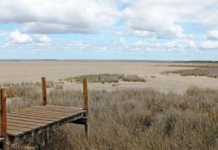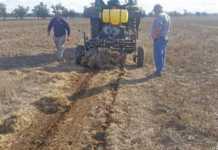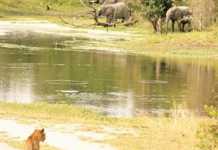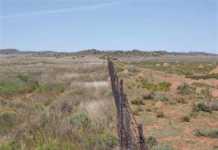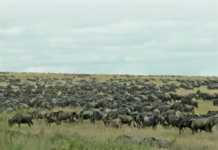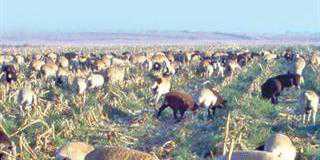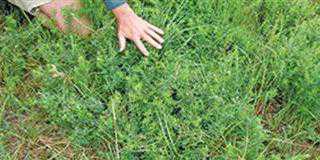HABITAT:
Denham’s bustards are found in the moist eastern and southern parts of SA, often seen on pastures and in harvested lands. They are usually not far from natural veld.
BREEDING:
To attract a female, males gather together in a ‘lek’, a regularly used display area. They fluff out the white feathers of the neck and breast creating a striking, bright white ‘balloon’ visible from more than 2km away. Eggs are laid in October and November, in clutches of one or two. The nest is merely a scrape on the ground within a kilometre or two of the lek, in vegetation tall enough to hide the incubating parent. The female incubates the eggs and rears the chicks. Bustards are likely to abandon a nest if they feel it’s been discovered.
DIET:
The birds eat a variety of seeds, berries, flowers and shoots, as well as insects and the occasional small vertebrate. They don’t cause significant damage to crops. Cultivated habitats are attractive only at certain times as natural veld provides the Denham’s bustard with reliable sources of food.
THREATS:
This uncommon species has a relatively restricted distribution range and is listed as vulnerable. Apart from collisions with overhead power lines, the main threats to Denham’s bustards on farm lands are:
- Disturbance: Human activity can disrupt breeding activities.
- Hunting and trapping: Although they are protected, bustards make good eating and have been extensively hunted in the past. Some are still illegally hunted or caught in traps set for other species, such as guinea fowl.
- Habitat destruction: Denham’s bustards are at least partially dependent on the availability of natural veld and aren’t found in areas where there is no natural vegetation.
Landowners can contribute to the conservation of this species by providing safe, undisturbed breeding areas. Little is known about where these birds regularly breed. Farmers who sight displays and nesting sites can inform the Co-ordinated Avifaunal Roadcounts projects.
Visit car.adu.org.za.

